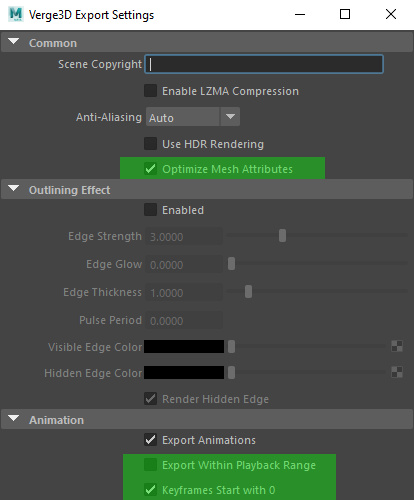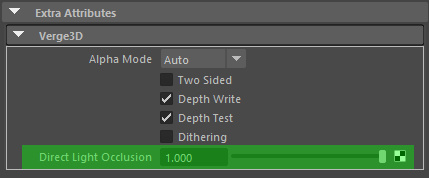Home › Forums › Graphics / Maya › Verge3D 3.0 for Maya: first preview build is available!
- This topic has 2 replies, 1 voice, and was last updated 4 years, 10 months ago by
 Yuri Kovelenov.
Yuri Kovelenov.
-
AuthorPosts
-
2020-02-06 at 2:29 pm #23356
 Yuri KovelenovStaff2020-02-06 at 2:30 pm #23357
Yuri KovelenovStaff2020-02-06 at 2:30 pm #23357 Yuri KovelenovStaff
Yuri KovelenovStaffMajor updates
Skinning and skeletal animation are now supported.
Morphing is now supported, both animatable and controllable with Puzzles.
Multiple UVs can now be used.
We supported Maya’s light decay model, including the related options for Point and Spot lights – Linear, Quadratic, and Cubic. Also the Penumbra Angle setting now works for Spot lights.
The export operation was made significantly faster.
Demo
Another example app, the steampunk appliance manual aka Teapot Heater, has been ported to Maya – link. This app shows off PBR materials, transparency, animation, and HTML-based UI.

Check out how it was made using the source files in the Verge3D distribution.
More features
We added more settings for animation control.
Per-Object: “Custom Frame Range”, “From” and “To”.

Global: “Export Within Playback Range” and “Keyframes Start with 0”.

Also “Optimize Mesh Attributes” global setting is now available and enabled by default. This setting removes unused tangents, making exported files much smaller. You however must disable it when assigning a normal-mapped material to an object which initially has no normal map (e.g. in a configurator).
A progress bar is now displayed during export operation.

The default lighting made consistent with what is seen in Maya viewport. Also Ambient Light’s intensity setting now correctly works.
Working units are now properly handled. By default, Maya uses centimeters (cm), but other units such as meters, inches, etc can now also be used.
Object selection and the current frame are no longer affected by the export operation.
We added a parameter called Direct Light Occlusion Factor to material settings.

This parameter controls the influence of the ambient occlusion texture attributed to Directional, Point and Spot lights. According to the glTF standard, ambient occlusion only affects indirect lighting (aka image-based lighting). This parameter, therefore, extends glTF by including explicitly available (“direct”) lights as well. By default, it is set to 1 meaning that AO is consistent with what we see in Maya viewport. If set to 0, it will behave in the old fashion, as glTF standard dictates.
Bug Fixes
We fixed the export crash when image textures are missing.
The near and far distance settings now correctly work for the camera.
We fixed the incorrect interpolation of rotation key frames.
We fixed the problem with shadows missing for Point and Spot lights. We also fixed the issue with lights parented to other objects.
2020-02-06 at 2:34 pm #23362 Yuri KovelenovStaff
Yuri KovelenovStaff -
AuthorPosts
- You must be logged in to reply to this topic.
